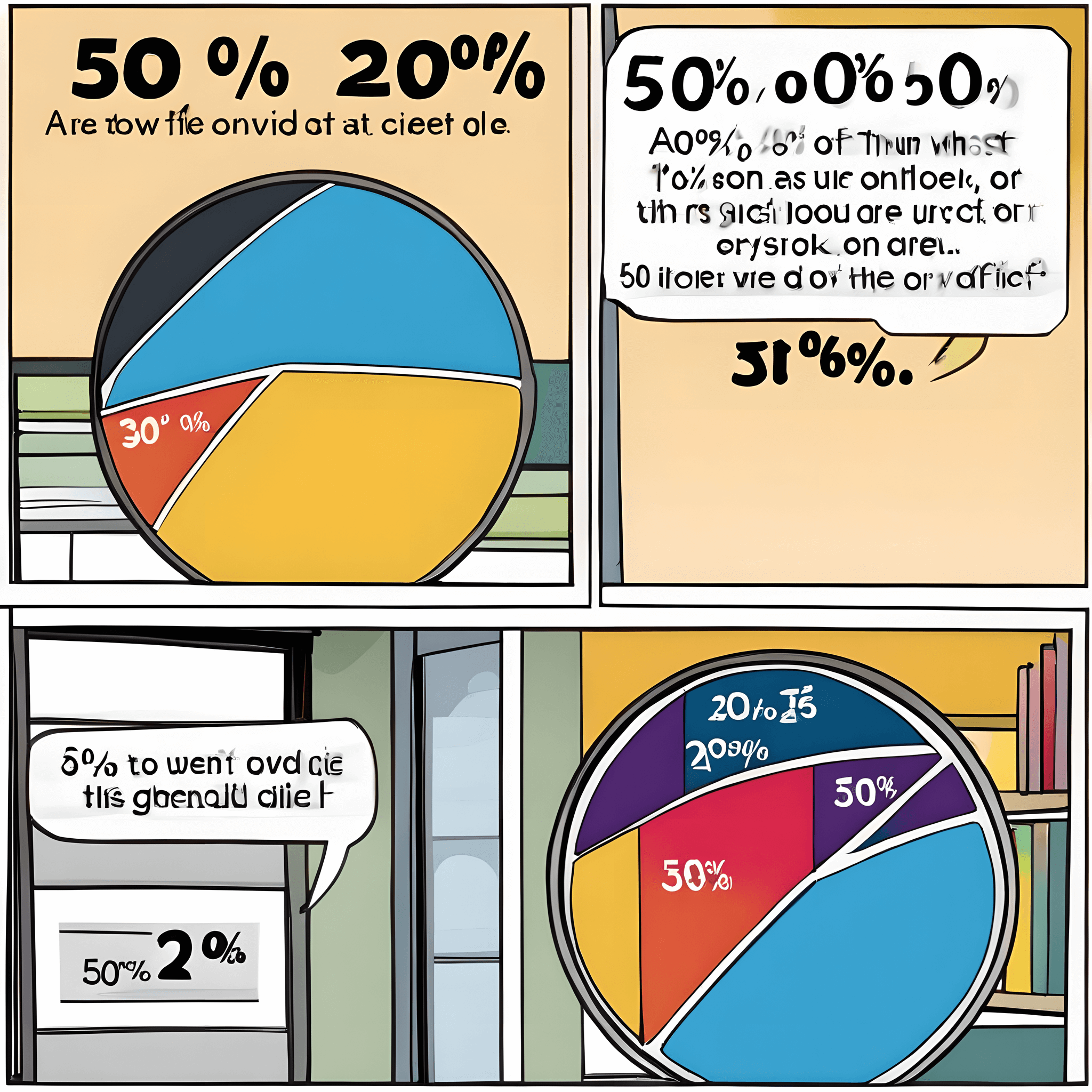In the world of budgeting, where complexity often reigns supreme, the 50/30/20 budget system emerges as a beacon of simplicity and practicality. This approach, often hailed for its user-friendly nature, allocates after-tax income into three distinct categories: 50% for needs, 30% for wants, and 20% for savings and debt payoff. In this comprehensive guide, we’ll unravel the intricacies of the 50/30/20 budget system, exploring its benefits, and drawbacks, how to follow it, alternative budgeting methods, and providing insights into its overall effectiveness.
Understanding the 50/30/20 Budget System
The 50/30/20 budget system is a straightforward and structured approach to managing your finances. It revolves around allocating your after-tax income into three primary categories:
- 50% for Needs:
- This category encompasses essential expenses like rent or mortgage, groceries, utilities, insurance, and other necessities that are vital for day-to-day living.
- 30% for Wants:
- Wants refers to non-essential, discretionary spending that adds enjoyment to your life. This can include entertainment, dining out, travel, and other indulgences that contribute to your overall well-being.
- 20% for Savings and Debt Payoff:
- The remaining 20% is earmarked for savings and debt payoff. This includes contributions to your savings account, emergency fund, and efforts to pay down debts.
Benefits of the 50/30/20 Budget System
- Flexibility and Easy Implementation:
- One of the standout features of the 50/30/20 rule is its flexibility. It is easy to understand and implement, making it accessible to individuals at various stages of their financial journey.
- Clear Overview of Spending:
- The categorization into needs wants, and savings provides a clear overview of your spending. This transparency helps identify areas where you can cut back, promoting a more intentional approach to financial management.
- Minimal Ongoing Maintenance:
- Unlike more intricate budgeting methods, the 50/30/20 system requires minimal ongoing maintenance. Once you’ve established your budget, it becomes a straightforward guide for managing your finances.
Drawbacks of the 50/30/20 Budget System
- Feasibility with High Necessities:
- The 50/30/20 rule may not be feasible for individuals whose necessities take up a large portion of their income. In such cases, there might be limited flexibility to allocate significant percentages to wants and savings.
- Requires Self-Motivation and Discipline:
- Following the 50/30/20 budget system requires self-motivation and discipline. Categorizing expenses and adhering to the guidelines necessitates a proactive approach to financial management.
How to Follow the 50/30/20 Budget System
- Calculate Your After-Tax Income:
- Begin by determining your after-tax income—the money you take home after taxes have been deducted.
- Allocate Percentages:
- Allocate 50% of your income to needs, 30% to wants, and 20% to savings and debt payoff. This division serves as the foundation of your budget.
- Track Your Spending:
- Regularly track your spending to ensure you stay within each category. Utilize budgeting tools, apps, or even a simple spreadsheet to monitor your financial activities.
- Adjust as Needed:
- Life is dynamic, and so should your budget. Periodically reassess your financial situation and adjust your budget to reflect changing income, goals, or unexpected expenses.
Alternatives to the 50/30/20 Budget System
- Envelope System:
- A tangible and visual budgeting method that involves physically allocating cash to different envelopes for specific spending categories.
- Zero-Based Budgeting:
- Requires allocating every dollar of your income to a specific category, ensuring that your income minus your expenses equals zero.
- Customized Budgeting:
- Tailoring a budget based on individual needs and priorities, considering unique financial goals and circumstances.
Overall Evaluation of the 50/30/20 Budget System
The 50/30/20 rule stands as a simple and effective budgeting method, catering to those seeking a flexible and easy-to-implement approach. However, it may not be suitable for everyone, especially those facing significant financial constraints or desiring a more customized budget based on their unique circumstances.
In the grand symphony of personal finance, the 50/30/20 budget system plays a harmonious tune, offering a balanced approach to managing needs, wants, and savings. Whether you’re a budgeting novice or a seasoned financial planner, the 50/30/20 rule provides a reliable framework for achieving financial harmony. So, dive in, allocate those percentages, track your spending, and let the 50/30/20 rule guide you toward financial well-being. Happy budgeting!

